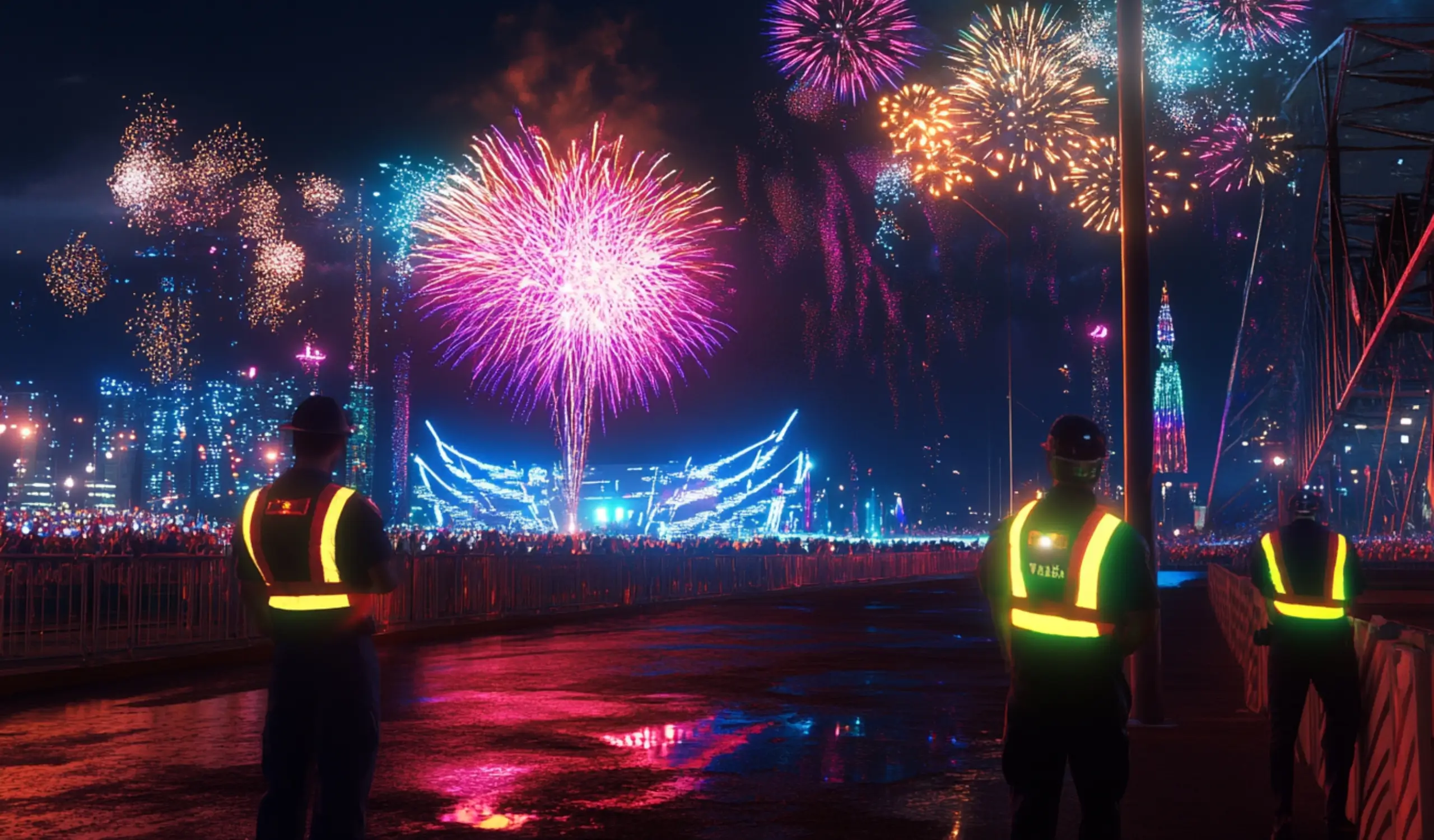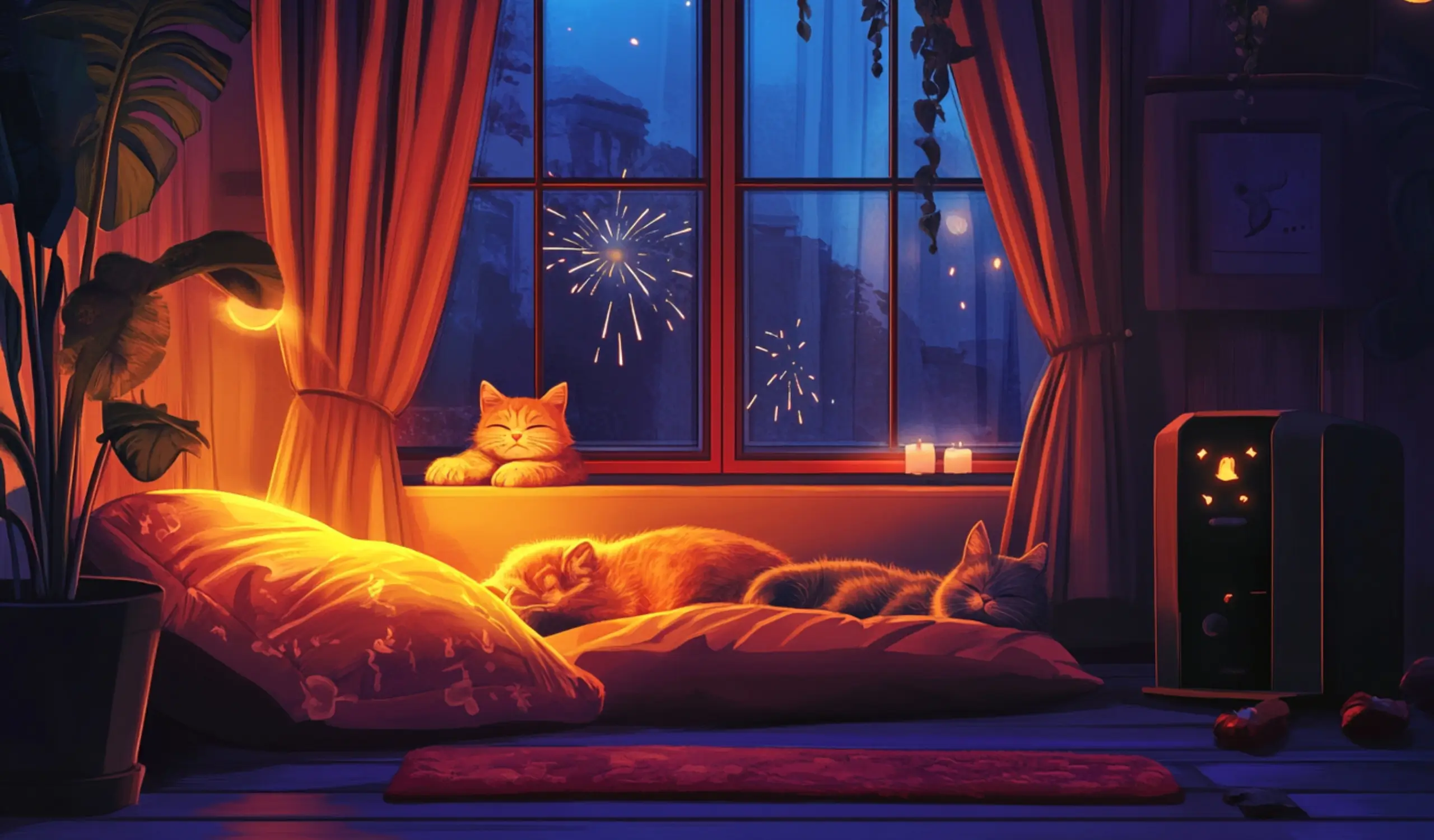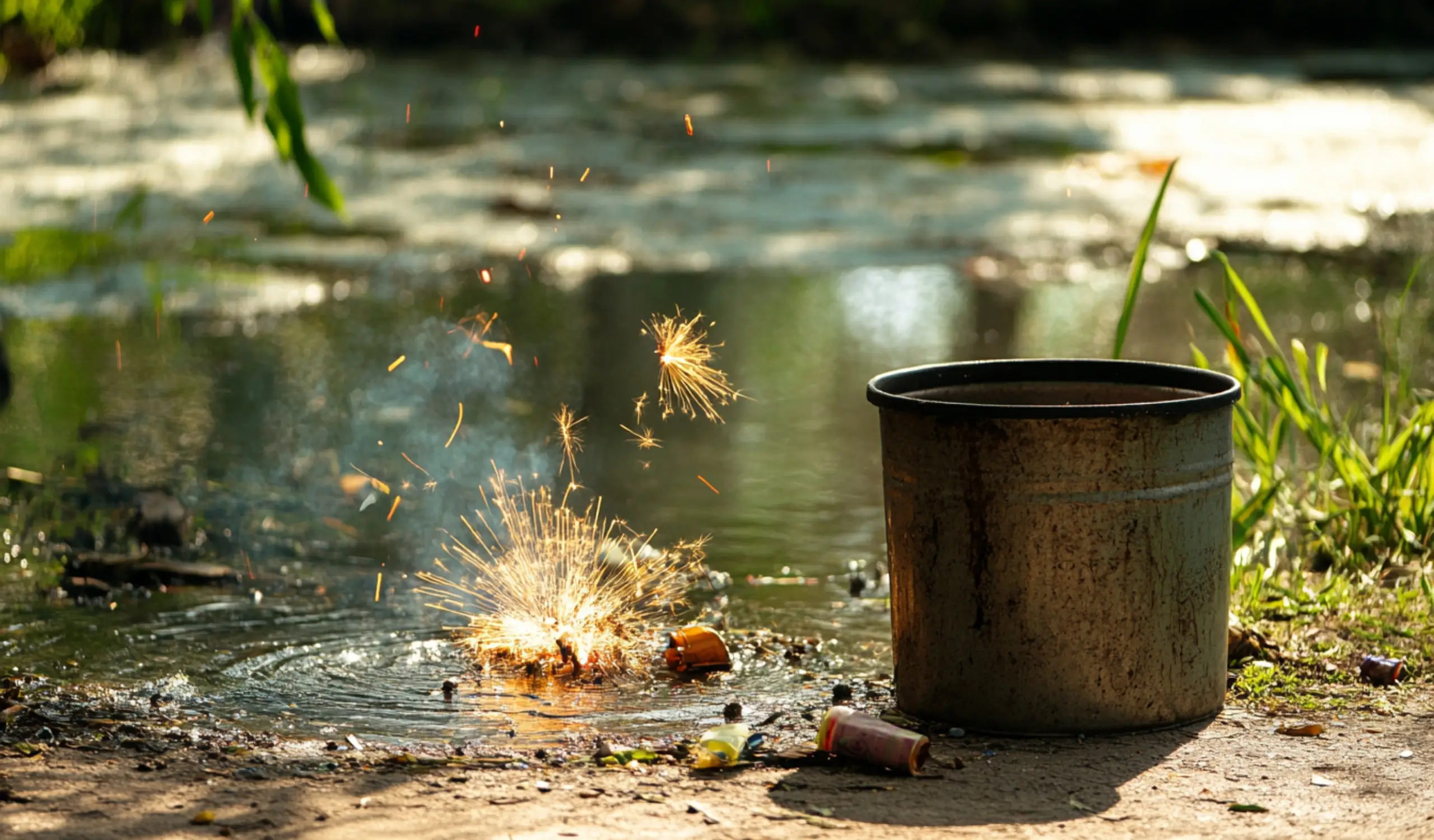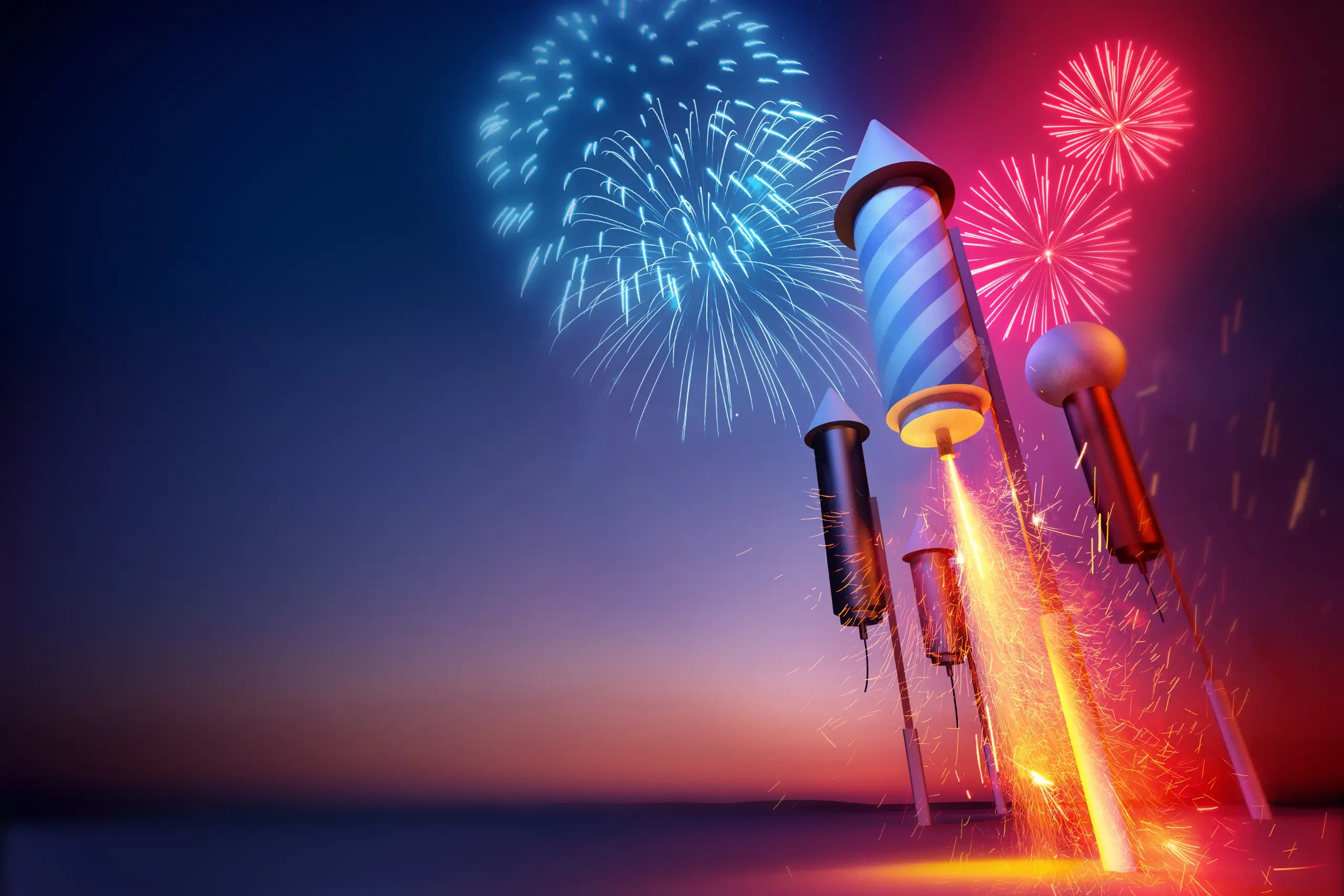Fireworks are an iconic part of celebrations worldwide, from Independence Day and New Year’s Eve to Bonfire Night and Diwali. While these dazzling displays bring joy and excitement, they also come with significant risks if handled improperly. Every year, fireworks-related injuries affect thousands of people, including children, and lead to fires and property damage.
This comprehensive guide provides actionable fireworks safety tips to ensure fun and safe celebrations. Whether you’re attending a public display or planning a home celebration, these tips will help you avoid accidents and injuries.

Why Fireworks Safety Matters
Fireworks are essentially small explosives, and improper use can result in:
- Injuries: Common injuries include burns, eye damage, and hearing loss. According to the U.S. Consumer Product Safety Commission (CPSC), thousands of people are injured annually by fireworks, with a significant portion of these incidents involving sparklers and firecrackers.
- Fires: Fireworks cause an average of 19,000 fires every year, leading to property damage and environmental harm.
- Harm to pets and wildlife: Loud noises and bright flashes can cause significant stress to animals, sometimes leading to injury as they attempt to escape or hide.

Fireworks Safety Tips for Home Displays
If you’re planning to have a fireworks show at home, it’s crucial to prioritize safety for everyone involved, including children, pets, and spectators. Fireworks are powerful and can be hazardous if not handled correctly. By following these detailed safety tips, you can ensure that your home display is as safe as it is fun.
1. Purchasing Fireworks Safely
Before anything else, ensure that you’re buying fireworks that meet safety standards:
- Buy from reliable sources: Purchase fireworks from licensed, reputable vendors who sell products that meet national safety standards. These will often be marked with safety certifications such as the CE (Conformité Européenne) mark or the UKCA (UK Conformity Assessed) mark. These marks indicate that the fireworks have been tested and are safe for consumer use.
- Avoid illegal fireworks: Steer clear of homemade or illegal fireworks, as these may not meet safety standards and can be much more dangerous. Illegal fireworks or firecrackers may be improperly manufactured and could cause accidental explosions.
2. Setting Up Your Fireworks Display
Setting up a fireworks display requires careful consideration of the location and surrounding environment:
- Choose a safe location: Select a clear, open area away from buildings, vehicles, trees, and any flammable materials such as dry grass, bushes, or fences. This helps reduce the risk of fires caused by fireworks that land outside the intended area.
- Level and hard surface: Ensure that the fireworks are set up on a flat, stable, and hard surface. This provides better stability and helps prevent fireworks from tipping over or launching unpredictably.
- Check the wind: Before lighting fireworks, check the wind direction. Wind can carry sparks to unintended places, increasing the risk of a fire. Ideally, the wind should be blowing away from spectators, buildings, and any easily flammable materials.
- Safety perimeter: Set up a designated safety perimeter around the fireworks area. Spectators, especially children, should stay at least 35 feet (10 meters) away from ground-based fireworks and 150 feet (45 meters) away from aerial fireworks like rockets or shells.
3. During the Fireworks Show
While the fireworks display is in progress, it’s essential to ensure that everyone remains safe and that the fireworks are handled properly:
- Supervision of children: Never allow children to light or handle fireworks. Children should be kept a safe distance away and should only observe from a designated viewing area.
- Light one firework at a time: Only light one firework at a time. Lighting multiple fireworks simultaneously increases the risk of a malfunction or accident.
- Use a long lighter or safety fuse: When lighting fireworks, always use a long lighter or safety fuse to keep a safe distance. Lighting fireworks by hand is dangerous, as it puts you directly in the path of the ignition.
- Wear protective gear: For additional safety, wear protective gear such as safety goggles and gloves while handling or lighting fireworks. This can help prevent injuries in the case of an unexpected firework malfunction.
- Never lean over fireworks: Always light fireworks from the side; never lean over them. Keep hair and clothing well away from the device. Fireworks can sometimes misfire or explode unexpectedly.
4. Handling “Duds” and Malfunctions
Not all fireworks go off as planned. When this happens, you must take extra precautions:
- Never approach a dud: If a firework doesn’t ignite or goes out, never try to relight it immediately. Wait at least 15 minutes before approaching it, as it may still ignite unexpectedly.
- Soak duds in water: Once the waiting period has passed, carefully place the dud in a bucket of water for 10-15 minutes. This ensures the firework is fully extinguished and makes it safe to handle and dispose of.
- Dispose of properly: After soaking, dispose of the firework in a metal trash can away from any combustible materials. Never leave spent fireworks in a pile on the ground, as residual heat can cause a fire.
5. Properly Disposing of Used Fireworks
Once your display has finished, proper disposal is essential to prevent fires and injuries:
- Soak sparklers: Sparklers continue to burn at extremely high temperatures even after they’ve gone out. Immerse them in a bucket of sand or water to fully extinguish any residual heat before discarding them.
- Disposal of used fireworks: Similarly, used fireworks should be soaked in water for a few hours before disposal to ensure their safety. Once fully submerged and cooled, place them in a metal container.
- Clean up: Carefully clean the area around the fireworks display to remove any debris or leftover fireworks pieces. This reduces the risk of small sparks igniting any leftover material.
6. Additional Safety Considerations
- Supervise the entire process: Always have a responsible adult present to supervise the entire fireworks display, especially when children are involved.
- Avoid alcohol consumption: Never light or handle fireworks if you are impaired by alcohol or drugs. Impaired judgment can lead to accidents and injuries.
- Pets and wildlife: Fireworks can be highly stressful for pets and wildlife. To prevent panic-induced injuries, keep animals inside in a safe, quiet area during the display.
- Stay sober: Avoid using alcohol or drugs while handling fireworks. Always remain alert to ensure a safe environment for everyone involved.
By following these detailed fireworks safety tips for home displays, you can significantly reduce the risks associated with fireworks while still enjoying a spectacular show. Remember that fireworks are powerful and unpredictable; safety should always come first.

Special Notes on Sparklers
Sparklers are popular for many during celebrations, often seen as a “safer” alternative to other fireworks. However, despite their seemingly innocent nature, sparklers pose serious risks due to their extremely high temperatures. Sparklers can burn at temperatures of up to 2,000°F (1,093°C)—hot enough to melt metals like aluminum and cause severe burns if mishandled. Here are some important safety tips for using sparklers:
1. Age-Appropriate Use
Sparklers may seem harmless fun, but their intense heat can cause burns and injuries, especially in young children. To ensure safety, only allow children aged five or older to handle sparklers and make sure they are always supervised. Even older children should not be left unattended while using sparklers.
2. Use Protective Gear
Sparklers’ high temperatures make them potentially hazardous, especially if they are dropped or come into contact with skin. To reduce the risk of burns, everyone who handles sparklers should wear gloves. Gloves help prevent burns and offer extra grip, making sparklers easier and safer to hold.
3. Proper Disposal
After a sparkler has burned out, it remains hot for a long time and can still cause burns or fires. Never leave sparklers lying around. Instead, immerse them in water immediately after use to ensure they are fully extinguished. This helps prevent accidental contact with hot tips and ensures that sparklers are completely cooled down before disposal.
While sparklers can add fun and excitement to celebrations, treating them with the same respect and caution as any other firework is important. By following these safety guidelines, you can help ensure that everyone enjoys sparklers without the risk of injury. Always supervise children, encourage the use of protective gloves, and dispose of sparklers safely to keep your celebration safe and enjoyable for everyone.

Consider Pets and Wildlife During Fireworks Displays
Fireworks can be a source of great joy for humans but can be extremely distressing for pets and wildlife. The loud noises, bright flashes, and unfamiliar smells often cause anxiety and fear in animals, which can lead to dangerous behaviors. Here’s how you can protect your pets and minimize the impact on local wildlife during fireworks displays:
1. Keep Pets Indoors
- Secure your pets inside: One of the most effective ways to protect pets from the stress of fireworks is to keep them indoors during the display. Close all windows and doors to reduce the noise and keep them from trying to escape. Pets, especially dogs, are known to try to run away from the noise of fireworks, which can lead to injuries or getting lost.
- Create a calm environment: Create a quiet, dark space where your pets can feel safe. Consider setting up a comfortable area with their bed, toys, and water. You might also try playing soothing music or turning on a television to mask the sound of the fireworks.
2. Be Mindful of Pets with Anxiety
- Provide comfort: If your pet is particularly anxious about loud noises, try to comfort them during the fireworks. Offer calm, gentle petting or soothing words, and keep them close to you for reassurance. Some pets may benefit from anti-anxiety products like calming collars, pheromone diffusers, or anxiety wraps that provide gentle pressure to help them feel secure.
- Avoid punishment: Don’t scold or punish your pet for fearful behavior. This can increase their anxiety. Instead, create a positive, reassuring environment that helps them feel safe.
3. Prepare for Escape Risks
- Check for escape routes: Before fireworks begin, ensure that windows, doors, and gates are securely closed and locked. Pets may try to escape the house if they get too frightened, and a common consequence of fireworks-related anxiety is a pet running away or getting injured while trying to flee the noise.
4. Protect Wildlife in the Area
- Consider local wildlife: Just as pets suffer from fireworks, local wildlife can also be negatively affected. The loud sounds can disrupt their natural behavior, cause disorientation, and even drive them out of their usual habitats. Fireworks, such as birds and small mammals, are especially disruptive to animals that rely on sight and sound for survival.
- Opt for professional displays: Consider attending a public fireworks show instead of holding one at home. Public displays are often more controlled and can help minimize the impact on local wildlife by being conducted in open, less populated areas. This reduces the chances of frightening animals in residential neighborhoods or nature reserves.
5. Be Aware of Firework Debris
- Clean up responsibly: After the fireworks are over, make sure to clean up any debris left behind. Stray fireworks pieces or wrappers can pose hazards to wildlife if ingested. Small animals, in particular, may mistake firework remnants for food, leading to potential harm. Dispose of all firework remnants properly, soaking them in water before placing them in a metal container for disposal.
While fireworks are an exciting part of many celebrations, it’s important to remember that the noise and bright lights often affect pets and wildlife. By keeping your pets indoors, offering comfort, and considering the impact on local wildlife, you can ensure your celebrations are enjoyable and safe for everyone—human and animal alike.

When to Seek Professional Help for Fireworks Displays
While many people enjoy fireworks as part of their celebrations, they come with inherent risks. Whether you’re planning a home fireworks show or attending one, there are times when seeking professional help is the safest and most responsible choice. Here’s when and why you should consider involving professionals:
1. Lack of Experience or Training
- Fireworks are hazardous. They are essentially small explosives that require proper handling to avoid accidents. If you or others are unfamiliar with how to safely set up, light, and dispose of fireworks, it’s highly recommended that you leave it to professionals who have the necessary training and experience.
- Fireworks safety education: Professionals undergo rigorous training to understand how different types of fireworks work and the precautions needed to prevent accidents. Attempting to handle fireworks without this knowledge can lead to serious injuries or property damage.
2. Large-Scale Displays
- For larger events: If you’re planning a grand display for a large crowd, whether it’s a family gathering or a public event, the complexity and risk involved in a large fireworks show escalate. Professional pyrotechnicians have the right equipment and knowledge to create impressive, controlled displays that prioritize safety for everyone involved.
- Safety distance and crowd management: Professionals understand the safety requirements for handling different types of fireworks, ensuring the correct distance between the fireworks and spectators and the proper setup to avoid accidents during the show.
3. Local Regulations and Permits
- Legal requirements: In many places, local laws and regulations govern the use of fireworks. This can include restrictions on the types of fireworks that can be used, the times they can be set off, and who can legally handle them. In some regions, you may be required to obtain a permit or license to handle or display fireworks.
- Professional services and permits: A certified professional pyrotechnician will be familiar with the legal requirements and can help you navigate permits and regulations to ensure your fireworks display complies with local laws.
4. Risk of Property Damage or Injury
- Fire hazards: Fireworks are a leading cause of fires, with sparks potentially landing on homes, vehicles, or other flammable materials. If you live in an area with dry conditions, high winds, or nearby flammable structures, it is safe to leave the fireworks to a professional to prevent fires.
- Injury prevention: A professional pyrotechnician will understand how to minimize risks to spectators, ensuring that fireworks are launched in a way that avoids injury. They also know how to handle malfunctions or fireworks that don’t ignite as intended, reducing the risk of accidents like sudden explosions or flying debris.
5. Concerns for Pets and Wildlife
- Impact on animals: Fireworks can be distressing to pets and local wildlife, often causing them to panic and flee, leading to potential injury. Professionals can help manage the location and timing of fireworks displays to minimize the impact on animals. Many public displays are set in open areas away from residential zones, reducing the effect on wildlife and pets.
- Controlling the event environment: Professional displays can be timed and set up to reduce noise levels or limit exposure, making them more considerate of the nearby animals.
6. Public Safety and Crowd Control
- Crowd management: For large gatherings or public events, professional fireworks shows often include trained security and crowd control measures to ensure the safety of all spectators. A pyrotechnic team knows how to set up the display so that the crowd does not get too close to the fireworks, ensuring safety even in larger events.
- Emergency preparedness: In the unlikely event of an emergency, such as a fire, explosion, or injury, professional teams are equipped to handle the situation quickly and efficiently, minimizing harm to spectators.
While home fireworks displays can be fun, they carry significant risks. If you’re unsure about your ability to manage fireworks safely, if you’re planning a large-scale show, or if your local regulations require professional handling, seeking help from certified pyrotechnicians is the safest choice.
Professionals not only ensure that fireworks are set off in a safe manner but also help you comply with local laws, minimize risks to people and property, and reduce the negative impact on pets and wildlife. When in doubt, let the experts handle the pyrotechnics, and you can enjoy the show worry-free.

Fireworks and the Law
Fireworks are a thrilling part of many celebrations but come with specific legal guidelines to ensure public safety. Understanding these laws is crucial whether you’re purchasing, handling, or attending a fireworks display. In this section, we’ll break down the key legal considerations surrounding fireworks use, from age restrictions to the timing of use, to help you stay compliant and safe.
1. Age Restrictions
- Purchasing fireworks: In most countries, you must be at least 18 years old to purchase fireworks. This age limit is in place to prevent young, inexperienced individuals from handling potentially dangerous explosives.
- Possession of fireworks: Minors are also illegal to possess fireworks in public places. If you’re under 18, you are prohibited from carrying or using fireworks outside of a controlled, legal environment.
- Public handling: Only licensed, trained professionals are permitted to handle certain types of fireworks, particularly large display fireworks or Category F4 fireworks. These are meant for public events and should never be used by amateurs.
2. Setting Off Fireworks – When and Where
- Time restrictions: In many places, there are specific times when fireworks can be set off. For instance, fireworks cannot typically be ignited between the hours of 11 PM and 7 AM. This regulation is designed to prevent noise disturbances late at night, ensuring a quieter environment for neighbors. However, there are some exceptions:
- On Bonfire Night (Guy Fawkes Night), fireworks can be used until midnight.
- For New Year’s Eve, Chinese New Year, and Diwali, fireworks can often be discharged until 1 AM.
- Public places: In many areas, fireworks are prohibited in public places or on the street. Fireworks should only be used on private property, provided you have the appropriate permissions. Always check local laws to ensure you’re compliant with these regulations.
- Private property restrictions: Even on private land, there may be rules about setting off fireworks. Homeowners should verify with local authorities or their homeowners’ association (HOA) to ensure no restrictions or special permits are required.
3. Fireworks Permits and Licensing
- Special licenses for certain fireworks: In some areas, you may be required to obtain a license or permit to use larger fireworks, such as aerial shells or display fireworks (often classified as Category F3 or F4). These fireworks require careful handling and are generally regulated to prevent misuse.
- Public display permits: A permit is usually necessary if you’re organizing a public fireworks display. This ensures the event is monitored by safety professionals and follows all local safety regulations.
4. Firework Safety Codes and Standards
When purchasing fireworks, look for safety marks, such as the CE mark in Europe or the UKCA mark in the UK. These indicate that the fireworks have passed safety tests and are approved for consumer use. Fireworks sold without these markings may not meet safety standards and could be illegal to use.
Category classifications
Fireworks are classified into different categories, each with specific safety requirements:
- Category F1 fireworks (minimal risk) are safe for use in confined spaces or indoors, often labeled as “indoor fireworks.”
- Category F2 fireworks are for garden use and require minimal safety distance.
- Category F3 fireworks are used in larger outdoor spaces and require greater distances from spectators.
- Category F4 fireworks are professional-grade and can only be handled by licensed pyrotechnicians.
5. Tampering with Fireworks
- It is illegal to modify or tamper with fireworks: Under the Explosives Act and other local laws, it is illegal to alter or modify fireworks in any way. This includes tampering with fuses or attempting to make homemade fireworks. Modifying fireworks increases the risk of malfunction, accidents, and injuries. If you’re caught tampering with fireworks, you may face severe penalties, including fines or imprisonment.
6. Fireworks and the Environment
- Environmental considerations: In some areas, fireworks are subject to regulations designed to protect the environment. This can include rules about using fireworks in areas with dry conditions to prevent wildfires. There may also be restrictions related to noise pollution, particularly in residential areas or near wildlife habitats.
7. Consequences of Breaking Firework Laws
- Fines and penalties: You may face significant fines if you are caught using fireworks illegally—whether it’s setting off fireworks at an unauthorized time or using fireworks without the proper permits. In some cases, breaking fireworks laws could even result in criminal charges, especially if it leads to property damage or injury.
- Liability for injuries and damage: If your fireworks display causes harm to people, pets, or property, you could be liable for damages. In serious cases, you might face lawsuits or insurance claims related to the incident.
Fireworks can enhance celebrations, but they are responsible for adhering to the law and ensuring safety. Always be aware of the age restrictions, time limitations, and permit requirements in your area.
Key Takeaways
- Prioritize safety by attending professional displays when possible.
- Always handle fireworks responsibly, following manufacturer instructions and safety guidelines.
- Protect children, pets, and spectators by creating a safe environment.
- Dispose of fireworks properly to prevent fires and injuries.
By taking these precautions, you can ensure your fireworks celebrations are memorable for the right reasons—fun, excitement, and safety.
